Proceratium crassicorne. Will follow up with culture and care.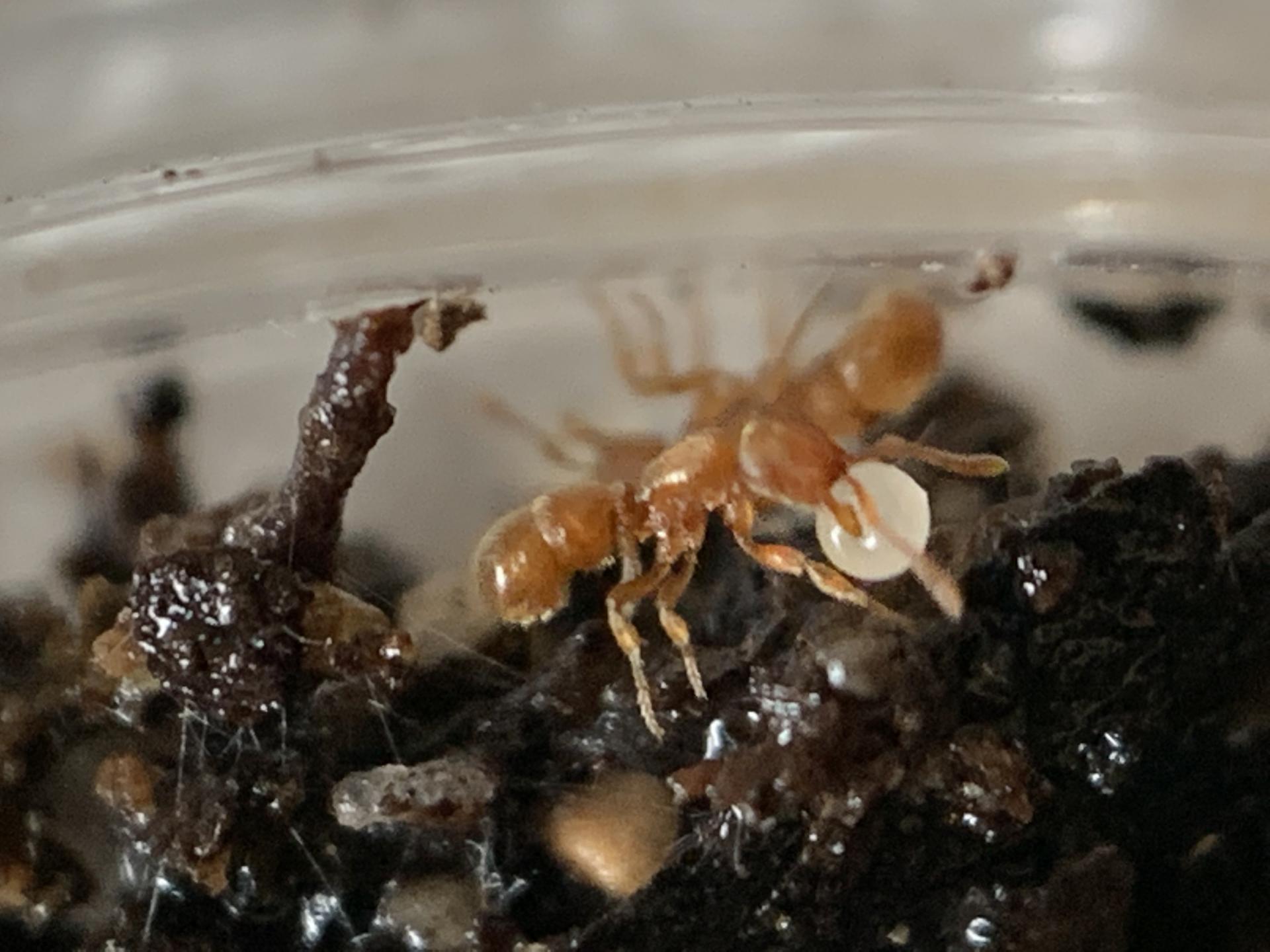
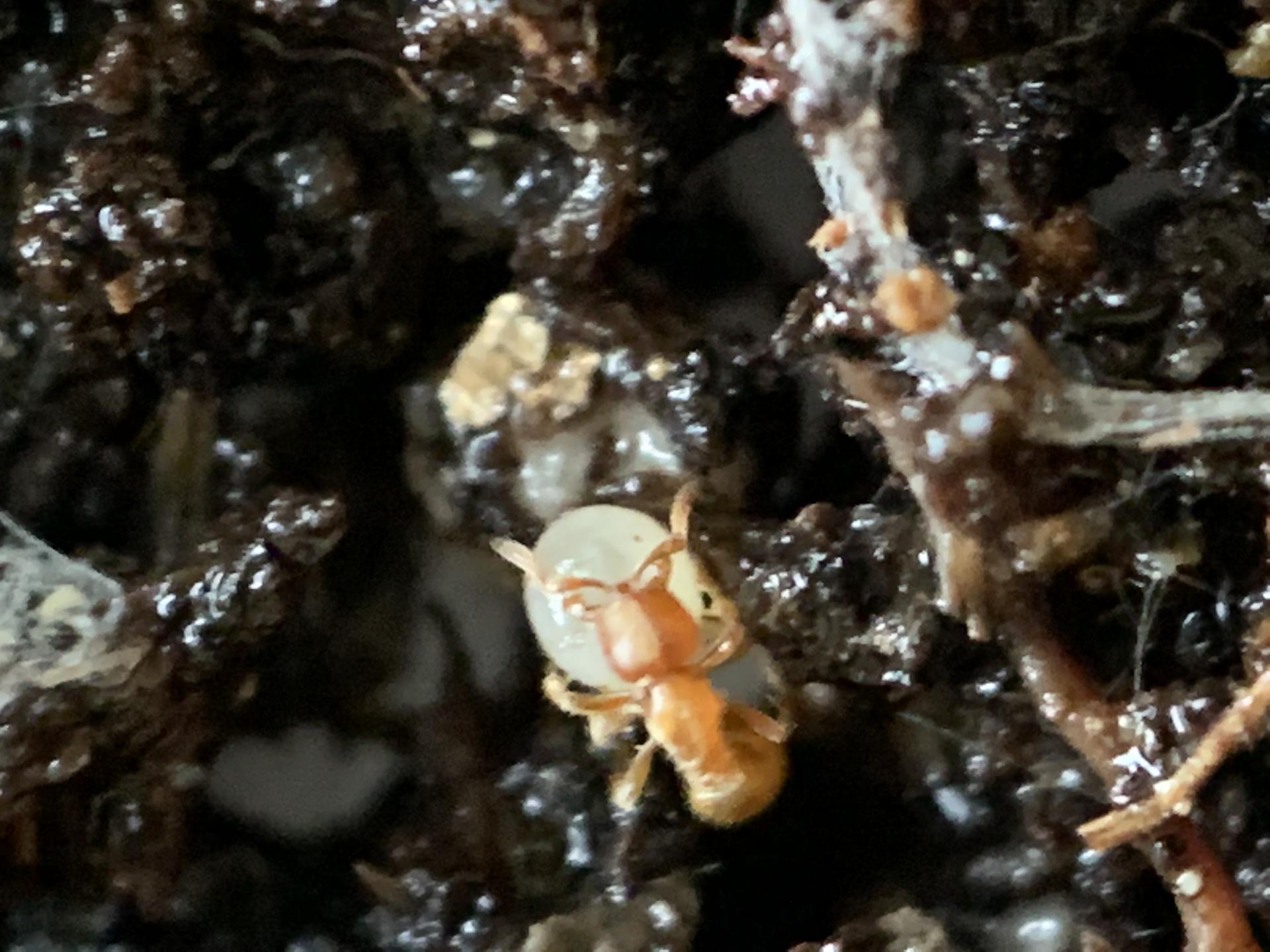
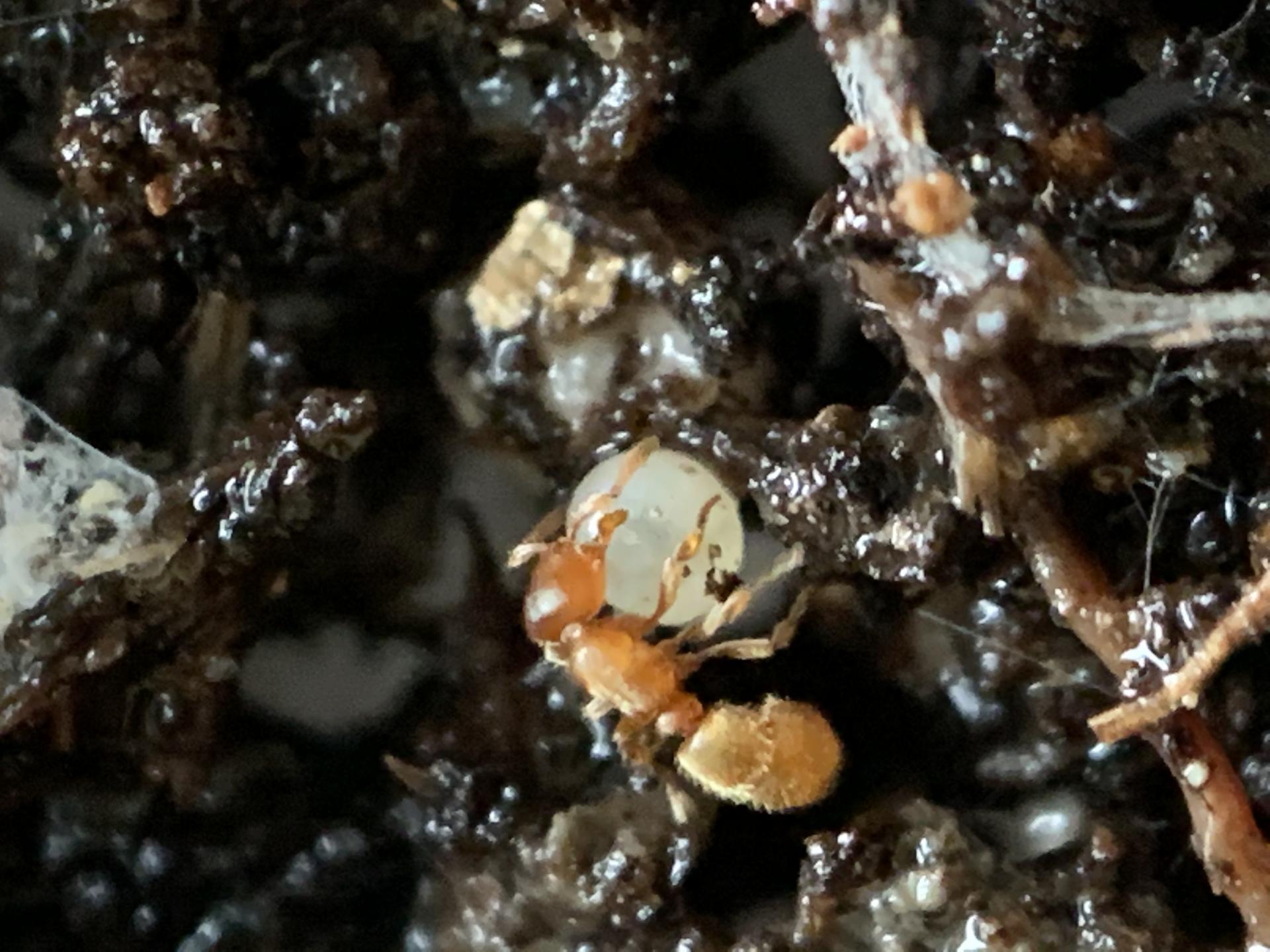
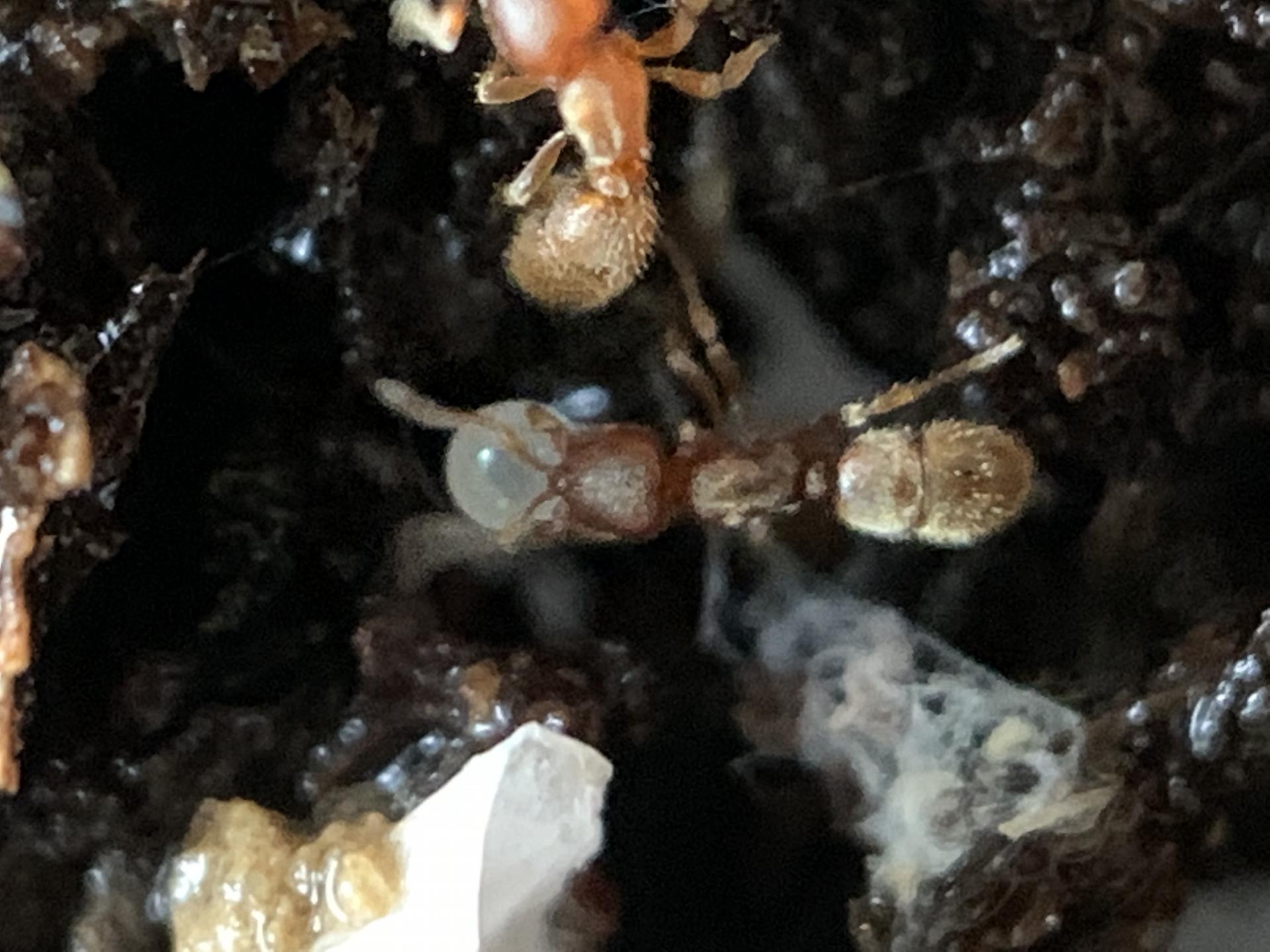
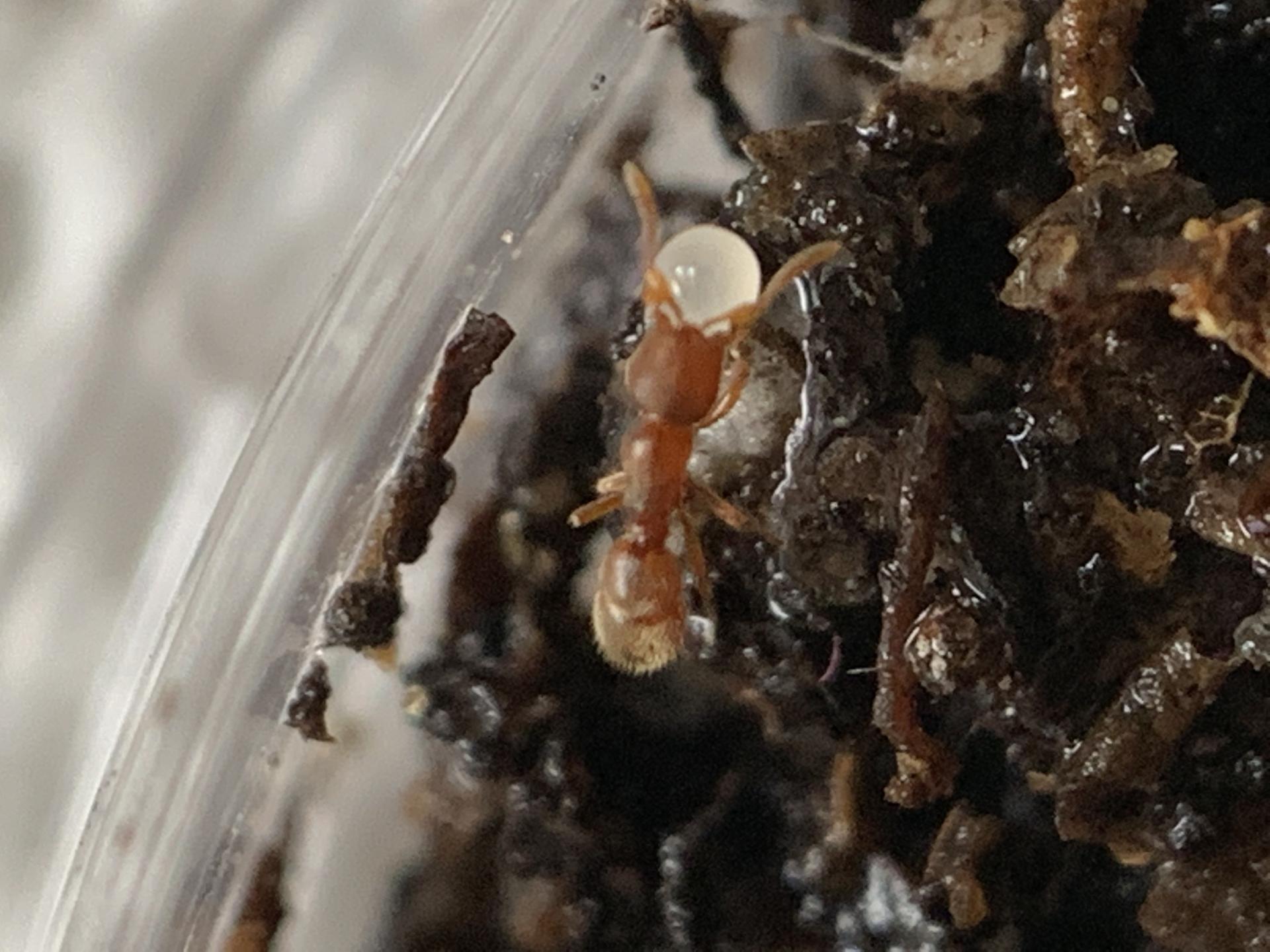
I have had this colony since last fall.

They have just been given some spider eggs of two separate and as of yet unidentified species of spiders. They needed to eat though!
WOO! nother purdue journal!
Proceratium Culture
Author: Gary Edwards
Scientific Name: Proceratium species
Common Name: Proceratium
Queen size: 3.5 – 5.5 mm. [depending on species]
Worker size: 2.5-3.5 mm. [depending on species]
Natural Habitat: In North America species may be found under deep set stones[1], under thick slightly moist duff over rocks in forested areas[2]
Circadian Activity: Cryptobiotic
Mating Flight : Author has found colonies in August with alates in Blue Ridge area of Appalachia
Queen Founding Method: Semi-Claustral, needs to be provided with spider eggs
Monogyne or Polygyne: Generally monogynous though polygynous colonies have been observed by author.
Average time from egg to worker: currently unknown.
Recommended Temperature: Summer: 70-80F. Winter: 38-47F.
Recommended Humidity: 70-80%
Preferred Foods: Arthropod eggs specifically spider. The American House Spider (Parasteatoda tepidariorum) is a good source of eggs. Best to culture the spider and use freshly laid eggs i.e., after egg sack is produced and spider egg development has not progressed by more than a few days.
Hibernation Details: Hibernation for up to 3 months at between 38-47F. Will overwinter with brood.
Escape Barrier Methods: These ants are best kept in enclosed containers with covers in a native soil mix. See Photo.
Difficulty rating: Difficult and for experienced keepers
Bite and/or Sting rating: NO
Special Care or Interesting Notes: Dietary needs are very specific. Author houses in small petri dishes housed in larger dishes.
Additional Links:
https://www.antwiki.org/wiki/Key_to_US_Proceratium_species
Why the double set of petris?
Why the double set of petris?
I have a smaller petri with native soil in which I keep the colony, then that petri is placed within a larger one with an absorbent cut paper towel piece which I keep moist. This way the smaller dish stays moist longer. I have not tried a typical formicarium with this genus and as such I felt this way I could more easily maintain moisture in the colony-containing dish.
Has anyone ever tried keeping a spider egg culture in the same way one might keep mealworms to feed ants?
Edited by TheMicroPlanet, May 5 2020 - 8:36 AM.
Has anyone ever tried keeping a spider egg culture in the same way one might keep mealworms to feed ants?
I am currently housing some American House Spider (Parasteatoda tepidariorum) as per a scientific journal article I came across, but these are 4 wild collected females and I am not even sure if they mated last fall. So far no eggs have been laid though I am also culturing drosophila to feed them and my ants. I am unfortunately left to go out and hunt for viable spider eggs. I am hoping to get this spider culture down.
Why the double set of petris?
I have a smaller petri with native soil in which I keep the colony, then that petri is placed within a larger one with an absorbent cut paper towel piece which I keep moist. This way the smaller dish stays moist longer. I have not tried a typical formicarium with this genus and as such I felt this way I could more easily maintain moisture in the colony-containing dish.
I see! Very interesting, I can use that for some of my ants.
You could try feeding them ant eggs, that may work.
I have from various genera, they show no interest.
Dead ants?
Dead ants?
haha, no not tried that but I have tried dead collembola...I am pretty sure they are rather spider specific and even then only certain aged eggs...
I see.
0 members, 1 guests, 0 anonymous users